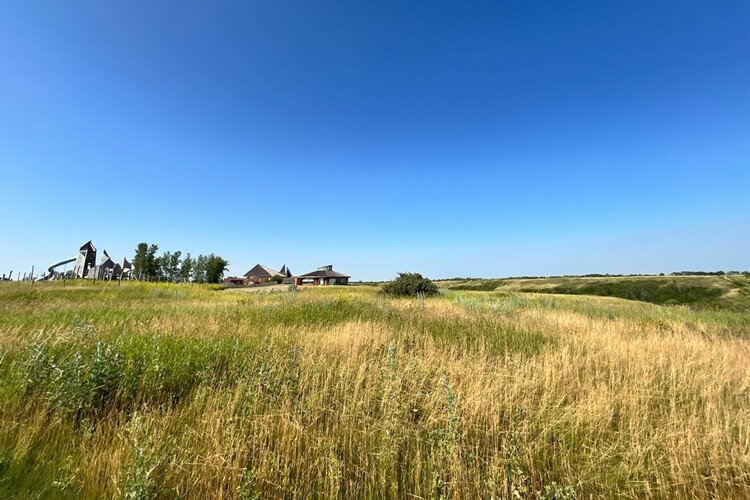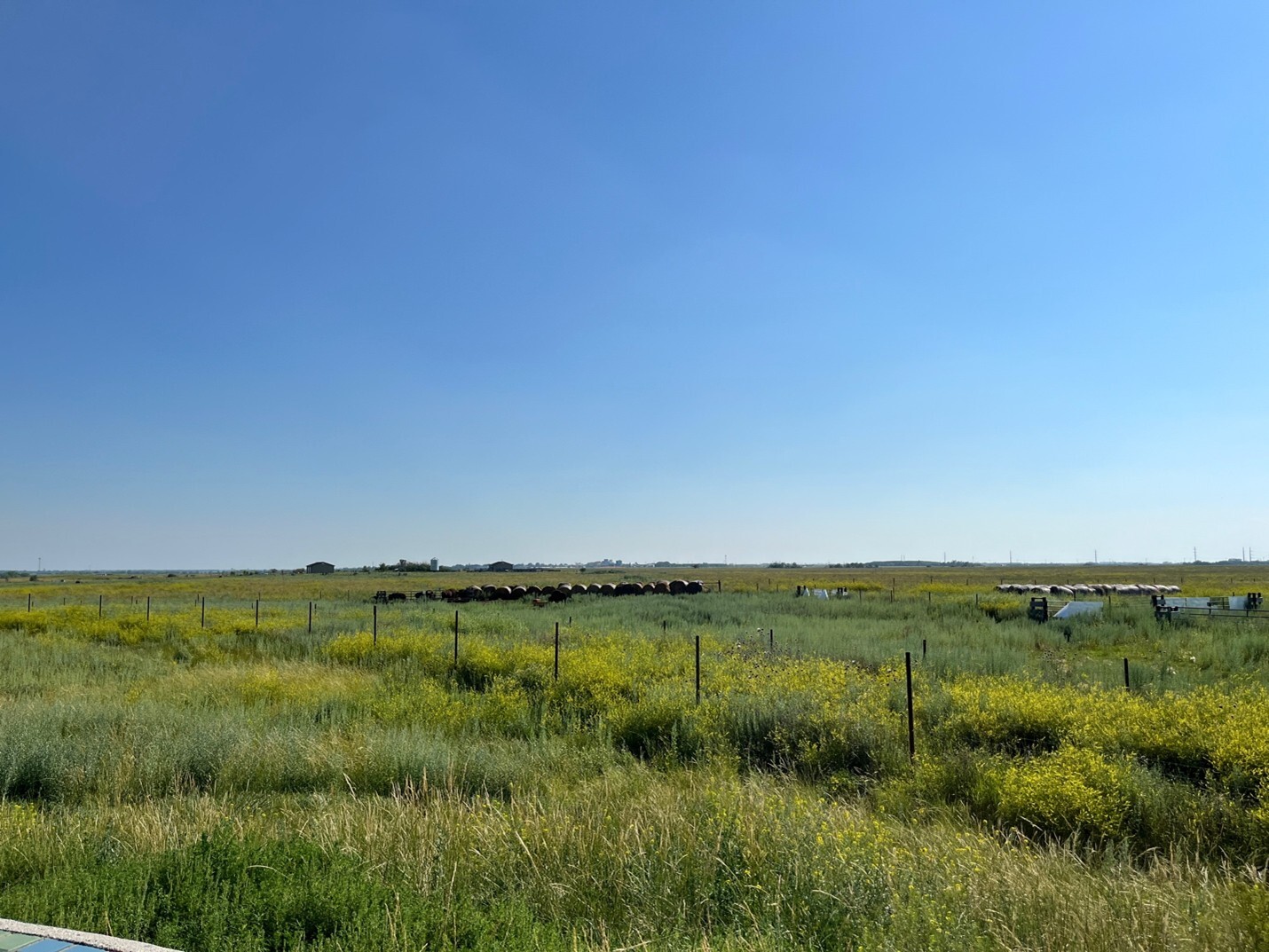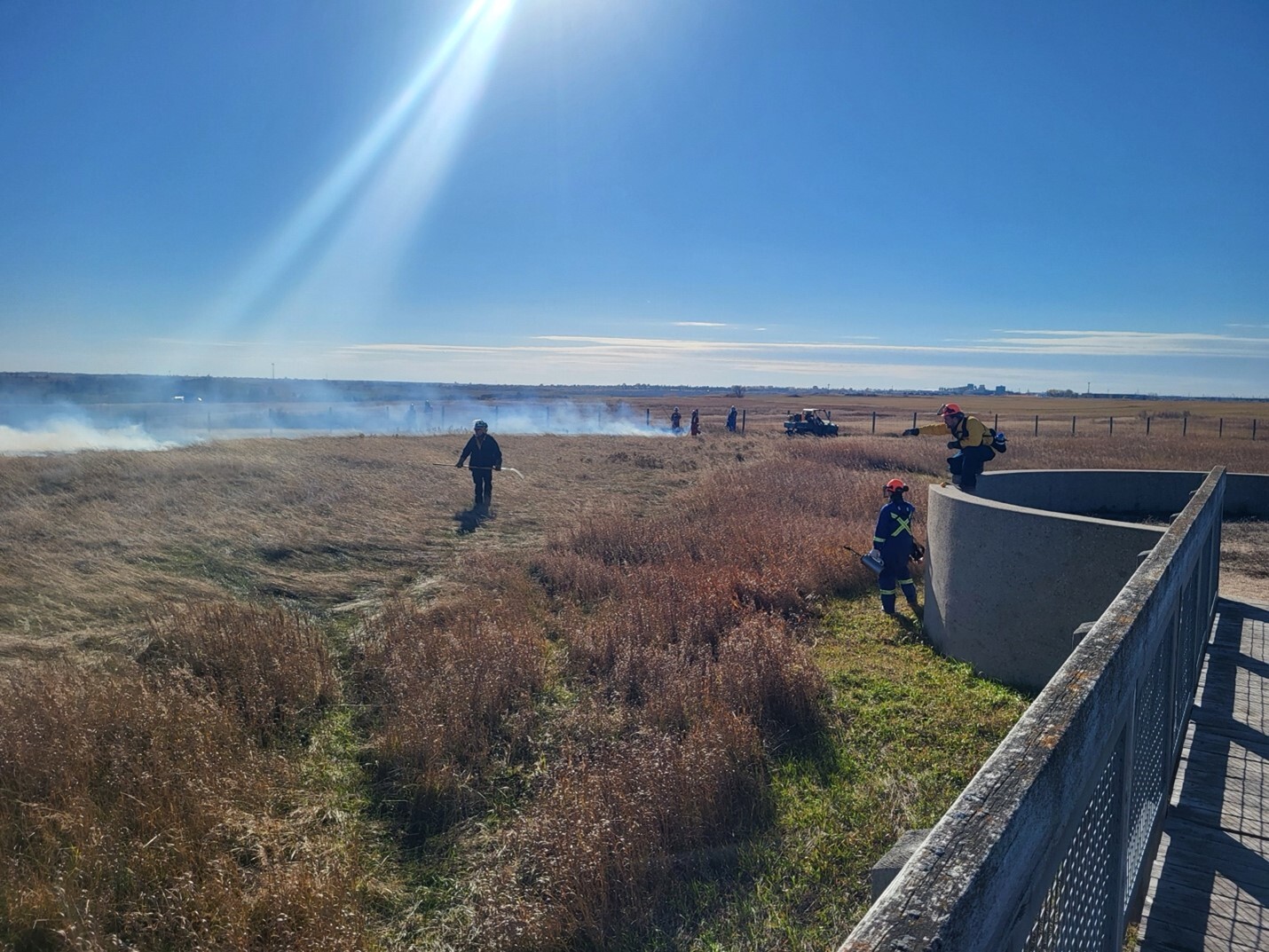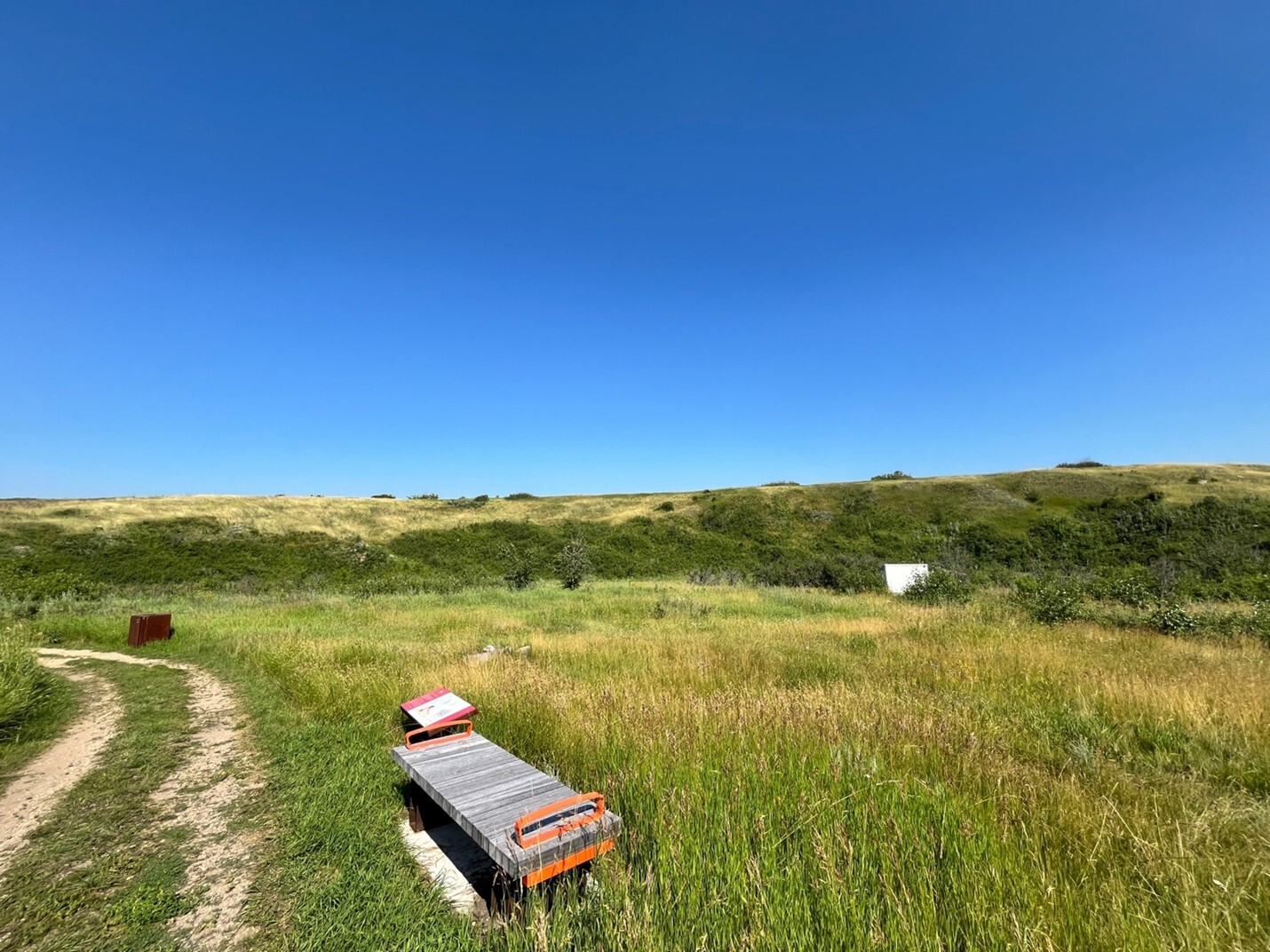Jul 8, 2025 Saskatchewan’s native prairie grasslands are an anthropogenic landscape: a product of thousands of years of human interaction with the environment. The native plant and animal species of the grasslands hold great cultural importance to Indigenous communities. The introduction of invasive species, dwindling numbers of native plant and animal species, and the disruption of Indigenous land management practices as a result of colonization have had devastating effects on the ecosystem. In the summer of 2024, my fellow research assistant, Cat, and I conducted research at Wanuskewin Heritage Park for our work with Heritage Saskatchewan. Our research was focused on volunteerism and funding availability in Saskatchewan’s Heritage sector. While at the park, we had the opportunity to learn about grassland revitalization from the Manager of Natural Resources and Ecology, Ian Hnatowich. Wanuskewin Heritage Park is a National Historic Site up for UNESCO designation. It is located north of Saskatoon along the South Saskatchewan River. The interpretive centre overlooks the opimihāw Creek valley. Within the valley are numerous archaeological sites, which have provided glimpses into thousands of years of habitation. The park is also home to petroglyphs, a medicine wheel, and a bison jump, which overlooks the valley. In 2019, the park welcomed a herd of Great Plains bison as part of an ongoing effort to restore cultural connections and native grasslands. The revitalization of the park’s grasslands is a tremendous endeavour. Despite the challenges that come with restoring a landscape to a state that is no longer within living memory, Ian indicated that we still need to implement what we can before it's too late. He emphasized that invasive species are the biggest concern to the grasslands, since once they become established, they can dominate local ecosystems and decrease native biodiversity. Ian explained that invasive species not only lead to the loss of “...ecological connections that we are currently aware of, but we’re also at risk of losing out on ecological connections that we are not currently aware of.” Once the invasives are removed, the re-introduction of endangered native species and threatened species, such as burrowing owls, can begin and make way for the re-establishment of lost ecological and cultural connections. One of the methods being implemented at Wanuskewin as part of the restoration project is the use of prescribed fires. Ian explained that people modified these ecosystems over thousands of years through management techniques such as burning. In turn, humans became a vital part of the ecosystem. Indigenous people on the Great Plains and other regions utilized landscape burning as a resource management method to manipulate their environments (Zedeño et al. 2021). Ian is implementing knowledge he received from the Canadian Prairies Prescribed Fire Exchange, University of Saskatchewan, and numerous Indigenous and non-Indigenous prescribed fire practitioners from across North America to safely conduct these fires and investigate differing tools and equipment that can be used to bring traditional values and knowledge into contemporary land management practices. Fire, along with grazing and climate, is one of the “necessary ingredients for healthy grasslands,” he explained, and these prescribed burns can help to promote ecosystem diversity, remove plant litter that may hinder the development of grasslands, remove invasive plants and create space for native species to repopulate the landscape. The new growth post-burn can also create a more nutrient-rich landscape and attract grazing animals, a process known as “pyric herbivory.” Currently, Ian is the only full-time employee working on these efforts at Wanuskewin, with the help of seasonal technicians in the summer, but the removal of invasives requires more hands than his team can provide. In order to ensure that this work is continuous, volunteers work on a lot of the invasive species removal work through the Park’s Stewards of Wanuskewin Program, which runs during the summer months. Ian shared that in 2023 and 2024, volunteers removed invasives from 7% of the park, representing thousands of individual plants removed from the landscape. The help of volunteers not only allows conservation work to continue while the resource team works on other projects, but it also provides an avenue for volunteers to foster their relationship with the land. In 2016, the National Trust for Canada added prairie grasslands to its endangered places list. The National Trust cited the transfer of Prairies Farm Rehabilitation Association (PFRA) Community Pastures to the province of Saskatchewan in 2012, when the program was discontinued by the federal government, as a great contributor to the endangerment of the grasslands. The PFRA was established in 1935 to combat soil erosion and restore grasslands in Canada, which allowed conservation work to be conducted on Community Pastureland. The Saskatchewan government has sold or leased this land to private owners since, which halted ongoing conservation efforts (Arbuthnott and Schmutz 2013). The conservation of this land is now up to the private landowners. This Crown land was once a safe space for Indigenous people to visit, harvest plants and animals and conduct ceremonies freely. An organization that was established to help fill the gap left by the privatization of these lands is the Treaty Land Sharing Network. This organization connects Indigenous peoples with landholders who provide safe spaces for cultural practices to be conducted. The process of decolonizing our natural environment with the guidance of Indigenous knowledge is something that everyone can participate in. Contributing to the restoration of the grasslands can be as simple as removing invasives when encountering them and filling the land we manage with native species. Although we do not often think of the environmental revitalization of native ecosystems as part of heritage or museum work, reviving pre-colonial, native environments helps us learn about the past, create stronger ecosystems and re-establish cultural connections with the land. Through the intersection of heritage and environment, the revitalization of native ecosystems allows all Canadians to play a part in reconciliation efforts and environmental stewardship. Allowing native species to thrive provides greater availability for Indigenous peoples to harvest culturally important plants and animals. If you want to provide an avenue for Indigenous peoples to harvest on your land*, consider joining the Treaty Land Sharing Network. If you want to learn how to conduct prescribed burns, the Canadian Prairies Prescribed Fire Exchange offers an introductory course through the University of Saskatchewan. For information on this course and other resources, such as community stories and research on the effects of prescribed fires, visit the Canadian Prairies Prescribed Fire Exchange website. To learn more about identifying invasive species, environmental restoration, and Indigenous conservation, visit the Nature Conservancy of Canada website. *The Treaty Land Sharing Network requires landholders to allow hunting in order to be part of the network. The Network currently only operates in Treaty 4 and Treaty 6 territories. Arbuthnott, Katherine and Josef K. Schmutz. 2013. PFRA Community Pastures: History and Drama of a Prairie Commons. Saskatchewan Notes. Canadian Centre for Policy Alternatives. Saskatchewan. Zedeño, María Nieves, Christopher Roos, Kacy Hollenback, and Mary Hagen Erlick. 2021. Bison Hunters and Prairie Fires: A View from the Northwestern Plains. In The Greater Plains: Rethinking a Region’s Environmental Histories, edited by Brian Frehner, and Kathleen A. Brosnan, pp. 48-65. Lincoln: University of Nebraska Press. Reestablishing Lost Connections through Grassland Conservation




References:
